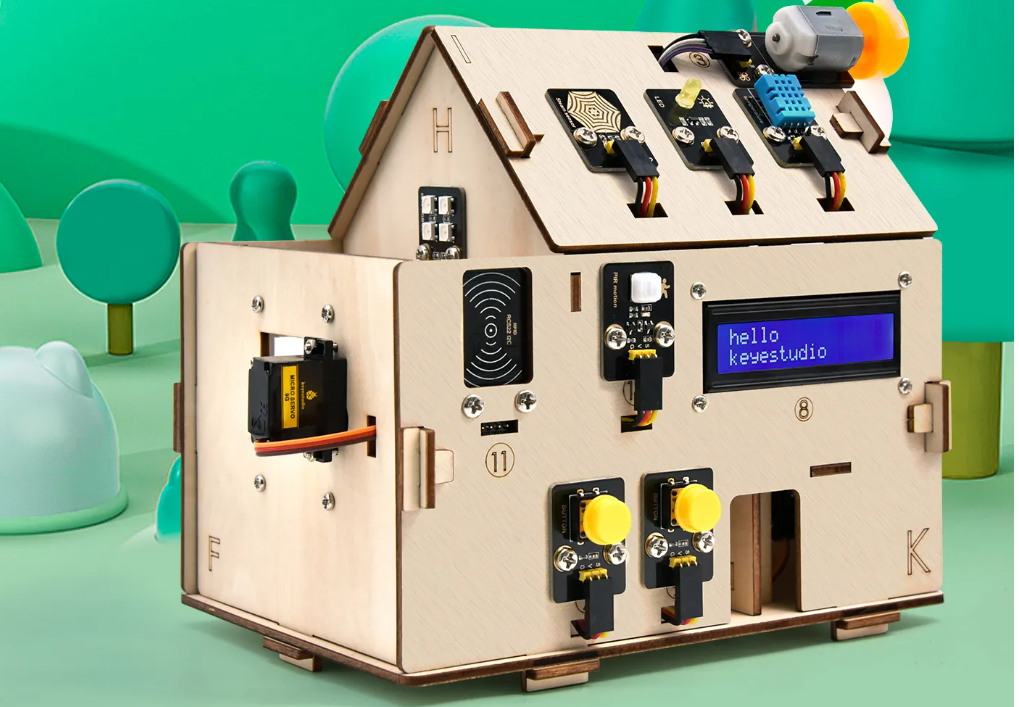Overview
Geekhouse is a smart dollhouse project that combines IoT devices with Large Language Models to create a natural language interface for controlling physical devices. Users can control LEDs, motors, and sensors using commands in any language, which are automatically translated into REST API calls by an LLM.
Features
- Natural language control of physical devices
- Multilingual support (demonstrated with English, Russian, Spanish)
- HATEOAS-compliant REST API for device discovery
- Real-time sensor monitoring
- Support for various actuators:
- LEDs (multiple colors and locations)
- DC motors
- Servo motors
- Human-friendly responses from sensors
Technical Stack
Hardware
- Raspberry Pi Pico W (main controller)
- Keyestudio Smart House Kit components:
- Light sensors
- Rain sensors
- LED arrays
- DC motors
- Servo motors
Software
- MicroPython with Microdot framework for REST API
- Python client application
- Anthropic Claude (Haiku-3.5) for natural language processing
- HATEOAS-based API architecture
Implementation Details
REST API Design
The API follows HATEOAS principles, providing self-documenting endpoints:
{
"_links": {
"self": { "href": "/leds" },
"filter_by_location": {
"href": "/leds/filter?location={location}",
"templated": true
}
},
"data": {
"1": {
"color": "yellow",
"location": "roof",
"state": 0,
"_links": {
"on": { "href": "/leds/1/on" },
"off": { "href": "/leds/1/off" }
}
}
}
}
LLM Integration
- System prompt includes complete API structure for context
- Uses Haiku-3.5 for optimal speed/cost balance
- Two-stage processing:
- Command translation to API calls
- Response formatting to natural language
Current Status
- Core functionality working and demonstrated
- Successfully handles multilingual commands
- Basic sensor monitoring implemented
- Public demo completed at Atlanta Python Meetup
Future Plans
- Add LCD display for local status display
- Integrate additional sensors from 42-in-1 Keyestudio kit
- Experiment with local LLM deployment for faster response times
- Add voice input support
- Implement complex automation scenarios
- Create a web interface for monitoring
Updates
2024-12-30: LCD implementation; curl to requests
- Added the LCD functionality
- Changed the LLM prompt to generate
requestscalls instead ofcurlcommands - Changed
dialogue.pyaccordingly to useevel()on the returned function instead of parsing thecurlcommand - Read about it in the blog curl vs. requests
2024-12-23: Initial Release
- Completed basic implementation
- Successfully demonstrated multilingual support
- Published project documentation and source code
